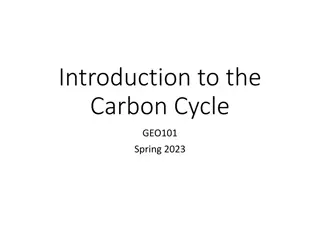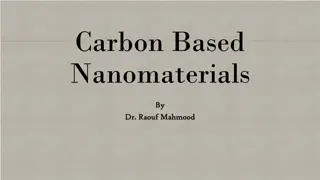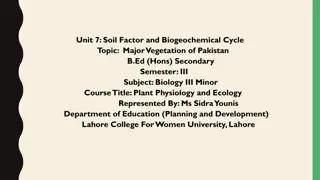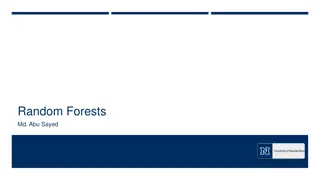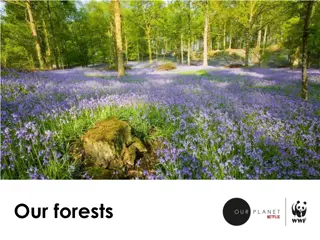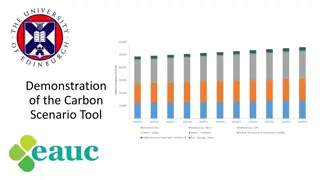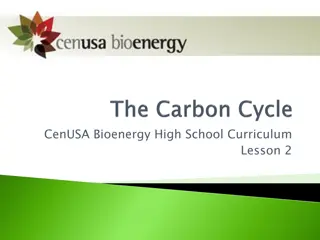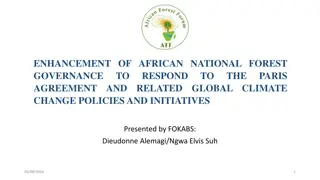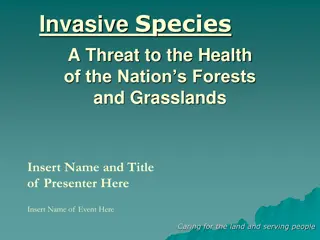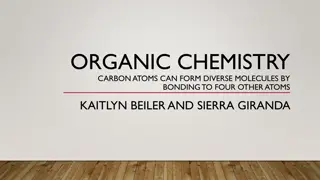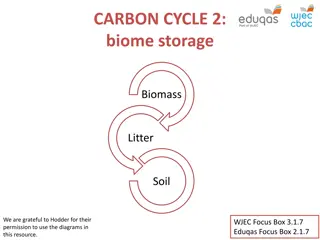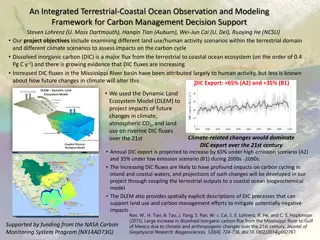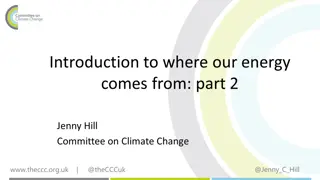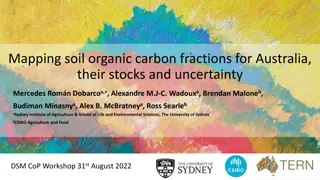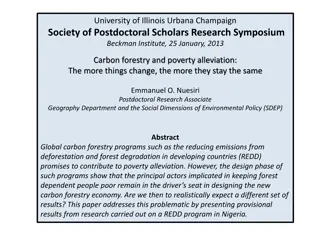Forests as Carbon Sinks
Forests play a crucial role as carbon sinks by absorbing more carbon than they release. Through photosynthesis, trees sequester carbon from the atmosphere, storing it as wood. This process forms part of the carbon cycle, where carbon moves between the atmosphere, Earth, and organisms. Despite eventually releasing carbon back into the atmosphere, trees are essential in maintaining the balance of carbon. Plants and trees are significant contributors to the carbon cycle, highlighting their importance as carbon sinks in nature.
Download Presentation

Please find below an Image/Link to download the presentation.
The content on the website is provided AS IS for your information and personal use only. It may not be sold, licensed, or shared on other websites without obtaining consent from the author.If you encounter any issues during the download, it is possible that the publisher has removed the file from their server.
You are allowed to download the files provided on this website for personal or commercial use, subject to the condition that they are used lawfully. All files are the property of their respective owners.
The content on the website is provided AS IS for your information and personal use only. It may not be sold, licensed, or shared on other websites without obtaining consent from the author.
E N D
Presentation Transcript
Forests as Carbon Sinks Adapted from Loose Leaf: the official blog of American forests.
What is a Carbon Sink? Something found in nature that holds or stores carbon- technically anything that absorbs more carbon than it releases. Look at all that carbon sinking! Credit: Max Pixel Forests are great examples of carbon sinks
Photosynthesis Trees survive by performing a process called photosynthesis, in which the tree actually consumes CO2. Being absorbed by trees is just one way that carbon moves through forests as part of the carbon cycle. https://scetv.pbslearningmedia.org/resource/494000753-plants- animals/photosynthesis-diagram-of-a-flower-plants-and-animals/
The carbon cycle is the process by which carbon travels from the atmosphere into the Earth and its organisms, and then travels back into the atmosphere. https://biologydictionary.net/carbon-cycle/
During Photosynthesis, trees and plants sequester , absorb, carbon from the atmosphere in the form of CO2, using it as food. The carbon from the CO2 becomes part of the plant and is stored as wood.
Humans and other animals eat plants, thereby taking in the carbon that has become part of the plant. Then, we breathe. (And we can thank trees for that not only do trees take up the carbon we don t want, but they also provide us with the oxygen we need to survive!) During that process, we release back into the atmosphere the same carbon that the plant absorbed in the first place, thus continuing the cycle of the carbon.
So if plants and trees eventually contribute to the release of carbon, then how are they considered carbon sinks? https://phys.org/news/2019-11-forests-amazon-important-carbon.html
Forests arent always carbon sinks; they can sometimes be a carbon source. When a forest releases more carbon than it absorbs, such as during a forest fire or when there are more dead than living trees, it is a carbon source. But in most other cases, forests absorb more than they release, making them carbon sinks.
Too much CO2 in the atmosphere is bad for air quality an human health. Fossil fuel emissions will require a concentrated effort to offset. Photo Credit: Martin Meissner
Carbon release from forests can occur at any time if triggered by deforestation, tree decay, forest fires or decomposition of other organic matter. Keeping in mind that carbon will not be stored in trees forever and that the overall carbon levels will keep increasing if emissions do. Planting trees and conserving forests is an important step towards reducing our carbon footprint, but it won t do the job on its own. It s crucial that we do our job of reducing our carbon emissions and our dependence on fossil fuels in addition to keeping our forest carbon sinks healthy and safe, so that they can do their job too.





